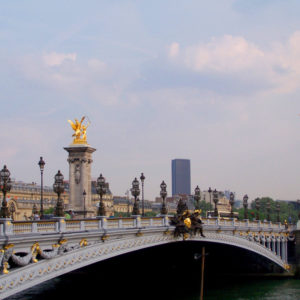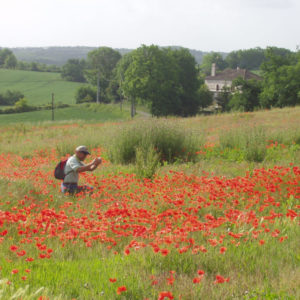Video courtesy of France.fr Atout France tourism
France is permeated with style and joie de vivre! The French claim credit for developing the Gothic style of architecture and cathedrals that stand as legacies of soaring stone for future generations. Creators of everything from palaces to subway stations, painting, literature, cuisine, fashion and savoir-faire, France’s contribution to culture is unsurpassed.
At the Musée de la Tapisserie de Bayeux, one will find the town’s most cherished treasure, the Bayeux tapestry. The embroidery on a 200-feet band of linen tells the story of the conquest of England by William the Conqueror.
In the early hours of June 6, 1944, a long-planned invasion of Normandy (the D-Day Landings) erupted along the normally flat shoreline of Calvados. This invasion was the first step in the battle to overcome Nazi occupation. A fleet of over 4,000 vessels converted the beaches into beachheads with such illustrious code names as Gold, Omaha, and Utah. Today this entire region is a focus of pilgrimage for the veterans of World War II landings.
Strasbourg, the capital of the region, plays host to the famous Gothic Cathédrale Notre-Dame, with its animated astronomical clock, and a maze of interlocking waterways lined by brightly painted half-timbered houses. The historic leather-tanning district of La Petite France is a picturesque must-see, but Strasbourg also boasts a 14th-century wine cellar which keeps a barrel of the world’s oldest wine, miraculously preserved since 1472!
Known as the mountain in the sea with 120 peaks that soar above 2,000m, and which remain snow-capped right up until springtime. The 25 rivers and streams that criss-cross this land make it the most well irrigated island in the Mediterranean. What is more, Corsica is blessed with the richest and most diverse coastline that stretches for more than 1,000km. the infinite diversity of its pearly beaches borders some of the most translucent waters in the world. It hosts in its heart the highest mountains of the Mediterranean. And wherever the eye arises, its preserved nature grants peace and protection to a rare wildlife, vast forests where more than 2,000 plant species thrive. With a Natural Regional Park that covers two thirds of its surface area, Corsica is an island that is largely very well preserved. This park covers 3,500 km² and is dotted with nature reserves and classified sites on land and sea. These are the mainstay of the constant conservation work that is carried out by various bodies.
The green isle: from the forests of Laricio pines and mountain lakes, emerald in colour, right through to the aromatic maquis scrubland, the refreshing highland pastures and the vineyards of its wine growing regions.
Summer from June to August is peak season when you will experience warm weather and lots of sunshine over most of the country.
Southern France is pleasantly warm from March to May and September to October. Winter December to March is when the ski season is in full bloom.
The isle of Corsica is fortunate to enjoy an exceptional climate all year round. The influence of the sea and the nearby mountains serve to regulate the temperature throughout the year, and result in a climate that is mild in the winter while remaining warm and dry during the summer months.
Generally, April through August sees the greatest rainfall, with May and June being the wettest months. Summer in Paris and the surrounding region sees maximum average temperatures of 24°C to 25°C, with daytime temperatures in the 30s not being uncommon.
Other Top Regions in France to visit – Champagne, Corsica, Burgundy, Lyon, Alps-Mont Blanc, Biarittz- Pays Basque, Brittany, Languedoc-Mediterranean, Toulouse-Pyrenees.
Showing all 2 results
-
 Belgium, England (UK) & Scotland, France, Hot Destinations
Belgium, England (UK) & Scotland, France, Hot DestinationsEurope by Rail – London, Paris and Brussels
Read moreNeed Assistance?
800-227-5317 | sales@pacific-destinations.com
Tell us where and when you want to go and we’ll give your request our immediate attention! No high pressure sales, just straight talk and sound advice!

